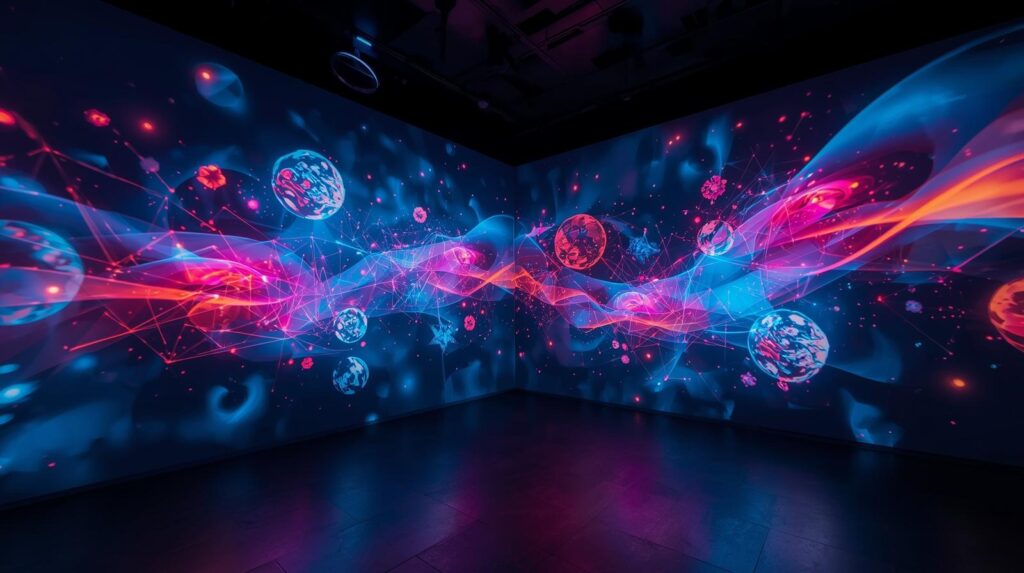In the rapidly evolving landscape of digital technology, holographic displays are emerging as a transformative force. These displays, once the realm of science fiction, are now entering practical applications, promising to revolutionize how we perceive and interact with digital content. This article delves into the fascinating world of holographic displays, exploring their capabilities, applications, and implications for various industries.
Holographic technology involves the creation of three-dimensional images that can be viewed without the need for special glasses. Unlike traditional 2D displays, holograms can present depth and parallax, providing a more immersive visual experience. This technology relies on the principles of light diffraction and interference to project lifelike images into space.
At the heart of holographic displays is the process of recording and reconstructing light waves. A hologram is created by capturing the interference pattern between two beams of coherent light, typically lasers. One beam, known as the reference beam, illuminates the recording medium directly, while the other beam, the object beam, reflects off the object to be recorded. The resulting interference pattern is stored on a recording medium. When the hologram is later illuminated with the reference beam, it reconstructs the original light waves, creating the illusion of a three-dimensional object.
While augmented reality (AR) overlays digital content onto the real world, holographic displays take it a step further by projecting full 3D images into space, visible from various angles. This distinction makes holographic displays particularly valuable in scenarios where depth perception and spatial awareness are crucial.
Holographic displays hold the potential to redefine industries by offering new ways to visualize and interact with information.
In healthcare, holographic displays can be used for advanced medical imaging and training. Surgeons can visualize complex anatomical structures in 3D, enhancing their understanding of patient-specific conditions. Medical students can benefit from immersive learning experiences, exploring the intricacies of the human body in ways traditional methods cannot provide.
In the educational sector, holographic technology can transform the learning experience by providing interactive, 3D visualizations of complex subjects. From exploring historical events to dissecting virtual organisms, students gain a deeper understanding of topics through engaging visual content.
Retailers are leveraging holographic displays to create dynamic shopping experiences. In-store holograms can showcase products in 3D, allowing customers to interact with virtual items before making a purchase. Advertisers can also use holograms to create captivating, eye-catching displays that stand out in crowded environments.
For architects and real estate professionals, holographic displays offer a powerful tool for visualizing building designs and property layouts. Clients can walk through virtual models of buildings, gaining a comprehensive view of spaces before they are constructed.
While holographic displays offer exciting possibilities, they also present challenges that must be addressed for widespread adoption.
Current holographic technology faces limitations in terms of resolution, brightness, and viewing angles. Achieving high-quality, full-color holograms requires significant computational power and advanced materials, making it a complex and costly endeavor.

Integrating holographic displays into existing systems and workflows can be challenging. Businesses must weigh the costs of implementation against the potential benefits. As the technology matures and becomes more affordable, we can expect broader adoption across industries.
As holographic technology continues to advance, we can anticipate even more innovative applications and improvements in performance. The development of new materials and techniques will likely overcome current limitations, leading to higher resolution and more accessible holographic displays.
For Chief Technology Officers, Business Strategists, and Innovation Managers, staying ahead of the curve requires careful consideration of holographic technology’s potential impact. Businesses should assess how holographic displays can align with their strategic goals, enhance operations, and create new opportunities.
Incorporating holographic technology into business strategies demands a forward-thinking approach. Organizations must evaluate the technology’s readiness, scalability, and potential return on investment. By embracing the possibilities of holography, companies can position themselves as leaders in innovation and customer engagement.
Holographic displays are poised to transform visual experiences across industries, offering new dimensions of interaction and engagement. While challenges remain, the potential benefits of holographic technology are undeniable. By understanding its capabilities and strategically integrating it into their operations, businesses can harness the power of holography to drive growth and innovation in the digital age. As we stand on the brink of this technological revolution, the future of visual experiences is brighter—and more three-dimensional—than ever before.




